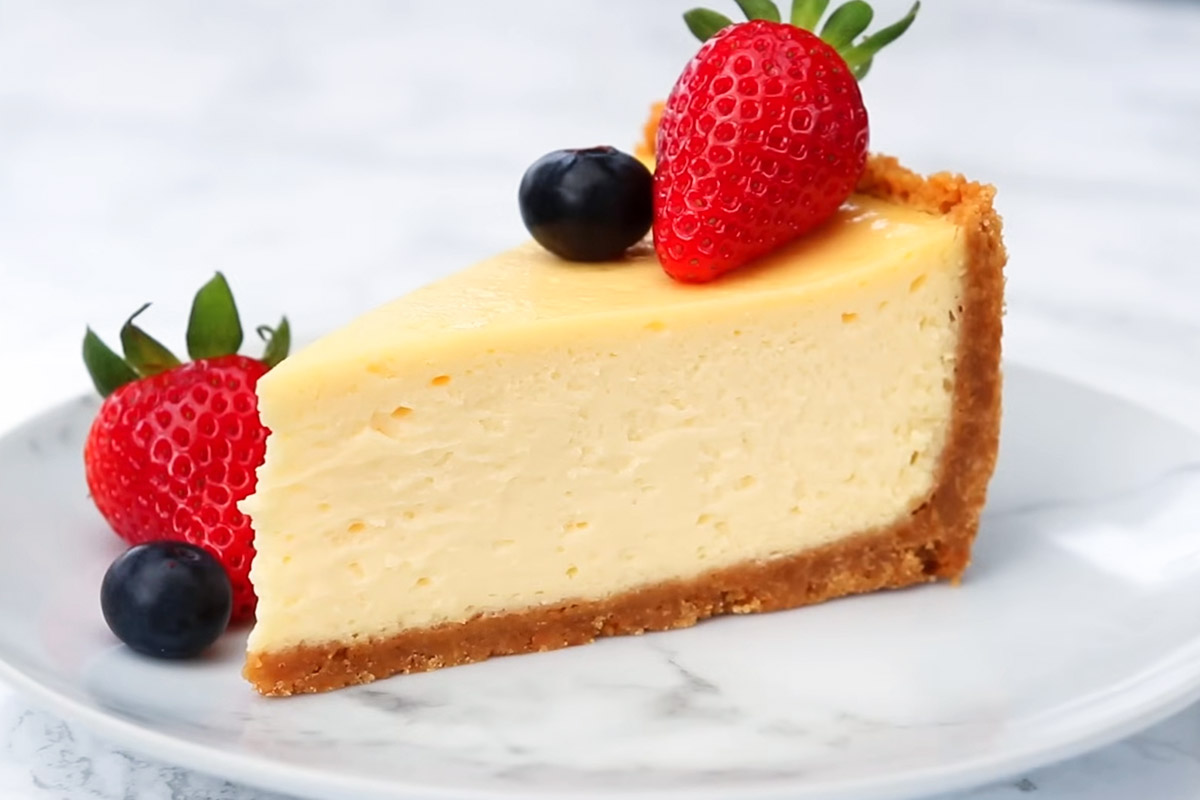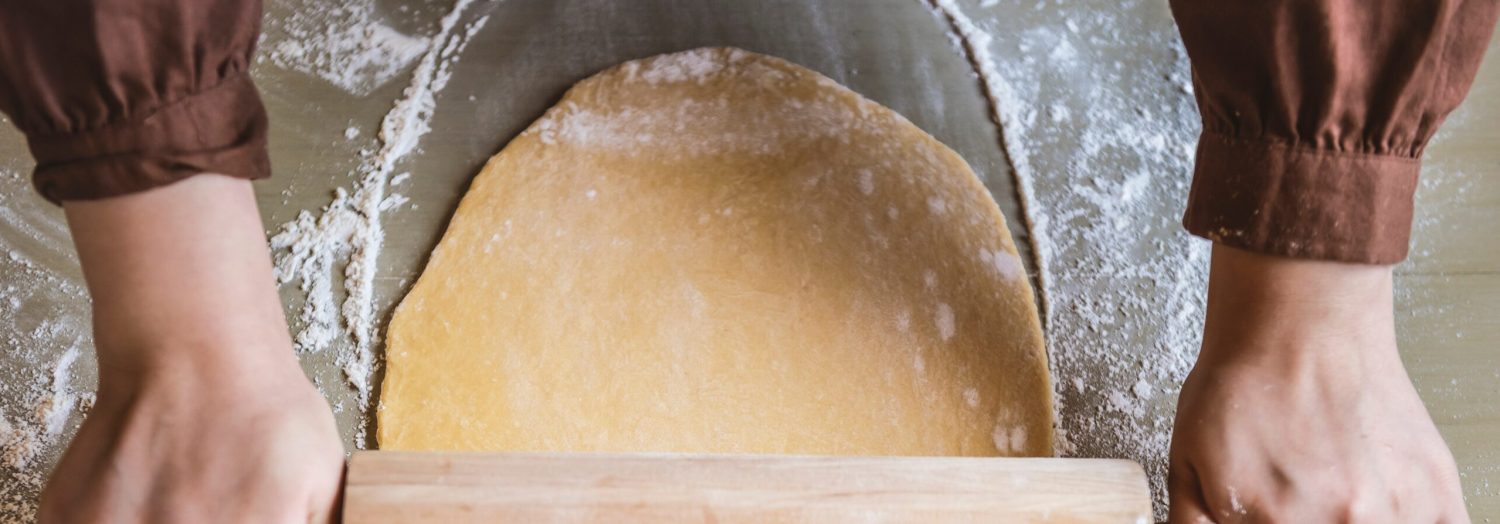A classic cheesecake is a timeless dessert that combines a rich, creamy filling with a buttery, crumbly crust. This recipe is perfect for any occasion, whether it's a family gathering, a holiday celebration, or just a sweet treat to enjoy at home. With a few simple ingredients and some patience, you can create a delicious cheesecake that will impress everyone.
Most of the ingredients in this recipe are commonly found in your pantry or refrigerator. However, you may need to pick up a few items at the supermarket. Make sure you have enough cream cheese on hand, as this recipe requires a substantial amount. Additionally, graham cracker crumbs might not be a staple in every household, so you may need to purchase those as well.

Ingredients for Classic Cheesecake Recipe
Graham cracker crumbs: These are the base for the crust, providing a sweet and slightly crunchy foundation for the cheesecake.
Sugar: Used to sweeten both the crust and the filling, giving the cheesecake its delightful taste.
Butter: Melted butter binds the graham cracker crumbs together to form the crust.
Cream cheese: The star of the cheesecake, providing a rich and creamy texture.
Vanilla extract: Adds a subtle, aromatic flavor to the filling.
Eggs: These help to set the cheesecake, giving it structure and a smooth texture.
Technique Tip for Making Cheesecake
When mixing the cream cheese and sugar, ensure the cream cheese is fully softened to avoid lumps. Beat the mixture until it is completely smooth before adding the eggs. This will help achieve a silky texture in your cheesecake.
Suggested Side Dishes
Alternative Ingredients
graham cracker crumbs - Substitute with digestive biscuit crumbs: Digestive biscuits have a similar texture and flavor profile, making them an excellent alternative.
sugar - Substitute with coconut sugar: Coconut sugar provides a similar sweetness with a slight caramel flavor, adding depth to the cheesecake.
butter - Substitute with margarine: Margarine can be used as a dairy-free alternative to butter, providing the same binding and moisture.
cream cheese - Substitute with Greek yogurt: Greek yogurt can be used for a lighter, tangier cheesecake while maintaining a creamy texture.
sugar - Substitute with honey: Honey adds natural sweetness and a unique flavor, though it may slightly alter the texture.
vanilla extract - Substitute with almond extract: Almond extract provides a different but complementary flavor to the cheesecake.
eggs - Substitute with flax eggs: Flax eggs are a vegan alternative that helps bind the ingredients together, though they may slightly change the texture.
Other Alternative Recipes Similar to Cheesecake
How to Store / Freeze Your Cheesecake
Allow the cheesecake to cool completely at room temperature before storing. This prevents condensation from forming inside the storage container, which can make the crust soggy.
Once cooled, cover the cheesecake with plastic wrap or aluminum foil. Ensure it is tightly sealed to prevent any fridge odors from seeping in.
For added protection, place the wrapped cheesecake in an airtight container. This helps maintain its freshness and prevents it from drying out.
Store the cheesecake in the refrigerator for up to 5-7 days. Always keep it chilled until ready to serve.
To freeze, first, chill the cheesecake in the refrigerator for at least 4 hours or overnight. This helps it firm up and makes it easier to handle.
Once chilled, wrap the cheesecake tightly in plastic wrap, followed by a layer of aluminum foil. This double wrapping prevents freezer burn and preserves the texture.
For individual servings, slice the cheesecake and wrap each piece separately. This makes it convenient to thaw only what you need.
Label the wrapped cheesecake with the date to keep track of its storage time. Frozen cheesecake can be stored for up to 2-3 months.
When ready to enjoy, thaw the cheesecake in the refrigerator overnight. Avoid thawing at room temperature to maintain its creamy consistency.
For a quick thaw, place the wrapped cheesecake in a sealed plastic bag and submerge it in cold water. Change the water every 30 minutes until thawed.
How to Reheat Leftovers
Preheat your oven to 250°F (120°C). Place the cheesecake on a baking sheet and cover it loosely with aluminum foil to prevent it from drying out. Warm it for about 15-20 minutes, or until it reaches your desired temperature.
For a quicker method, use the microwave. Place a slice of cheesecake on a microwave-safe plate. Heat it on medium power for 20-30 seconds. Check the temperature and continue heating in 10-second intervals if necessary. Be cautious not to overheat, as this can cause the cheesecake to become rubbery.
If you prefer a more gentle approach, use a double boiler. Place the cheesecake slice in a heatproof dish and set it over a pot of simmering water. Cover the dish with a lid or aluminum foil. Heat for about 10-15 minutes, or until warmed through.
Another method is to use a steamer. Place the cheesecake slice on a heatproof plate and set it in a steamer basket. Steam for about 5-7 minutes, or until the cheesecake is warmed to your liking. This method helps retain the cheesecake's moisture and creamy texture.
For an unconventional but effective method, use a sous vide machine. Seal the cheesecake slice in a vacuum-sealed bag and submerge it in a water bath set to 140°F (60°C). Heat for about 30-45 minutes. This method ensures even heating without compromising the cheesecake's texture.
Essential Tools for Making Cheesecake
Oven: Preheat to 325°F (165°C) for baking the cheesecake.
Springform pan: A 9-inch pan with removable sides, essential for easy release of the cheesecake.
Mixing bowl: Used to combine the graham cracker crumbs, sugar, and melted butter for the crust.
Large bowl: For beating the cream cheese, sugar, and vanilla together until smooth.
Electric mixer: Ideal for beating the cream cheese mixture to a smooth consistency and incorporating the eggs.
Measuring cups: To measure out the graham cracker crumbs, sugar, and butter accurately.
Measuring spoons: For measuring the vanilla extract.
Spatula: Useful for scraping down the sides of the bowl to ensure all ingredients are well mixed.
Knife: To run around the rim of the pan to loosen the cake after baking.
Refrigerator: To chill the cheesecake for at least 4 hours before serving.
Cooling rack: To cool the cheesecake before refrigerating.
How to Save Time on Making Cheesecake
Prepare the crust ahead: Mix graham cracker crumbs, sugar, and butter in advance and store in the fridge.
Use room temperature ingredients: Ensure cream cheese and eggs are at room temperature for easier mixing.
Pre-measure ingredients: Have all ingredients measured and ready to go before starting.
Use a food processor: Quickly blend cream cheese, sugar, and vanilla for a smooth mixture.
Line the pan: Use parchment paper to line the springform pan for easy removal and cleanup.

Classic Cheesecake Recipe
Ingredients
Crust
- 1.5 cups graham cracker crumbs
- 0.25 cup sugar
- 0.5 cup butter, melted
Filling
- 32 ounces cream cheese, softened
- 1 cup sugar
- 1 teaspoon vanilla extract
- 4 large eggs
Instructions
- Preheat oven to 325°F (165°C).
- Mix graham cracker crumbs, ¼ cup sugar, and melted butter. Press into the bottom of a 9-inch springform pan.
- Beat cream cheese, 1 cup sugar, and vanilla in a large bowl until smooth. Add eggs one at a time, mixing on low speed after each addition just until blended. Pour over crust.
- Bake for 55-60 minutes or until the center is almost set. Run a knife around the rim of the pan to loosen the cake; cool before removing the rim. Refrigerate for 4 hours before serving.
Nutritional Value
Keywords
Suggested Appetizers and Main Courses for Cheesecake
More Amazing Recipes to Try 🙂
- Refried Beans Recipe30 Minutes
- Dark 'n' Stormy Cocktail Recipe5 Minutes
- White Russian Cocktail Recipe5 Minutes
- Shrimp and Crab Seafood Salad Recipe15 Minutes
- Cheddar Cheese Soup Recipe45 Minutes
- Canadian Yellow Split Pea Soup with Ham Recipe2 Minutes
- Banana Strawberry Muffins Recipe35 Minutes
- Malibu Bay Breeze Recipe5 Minutes


Leave a Reply